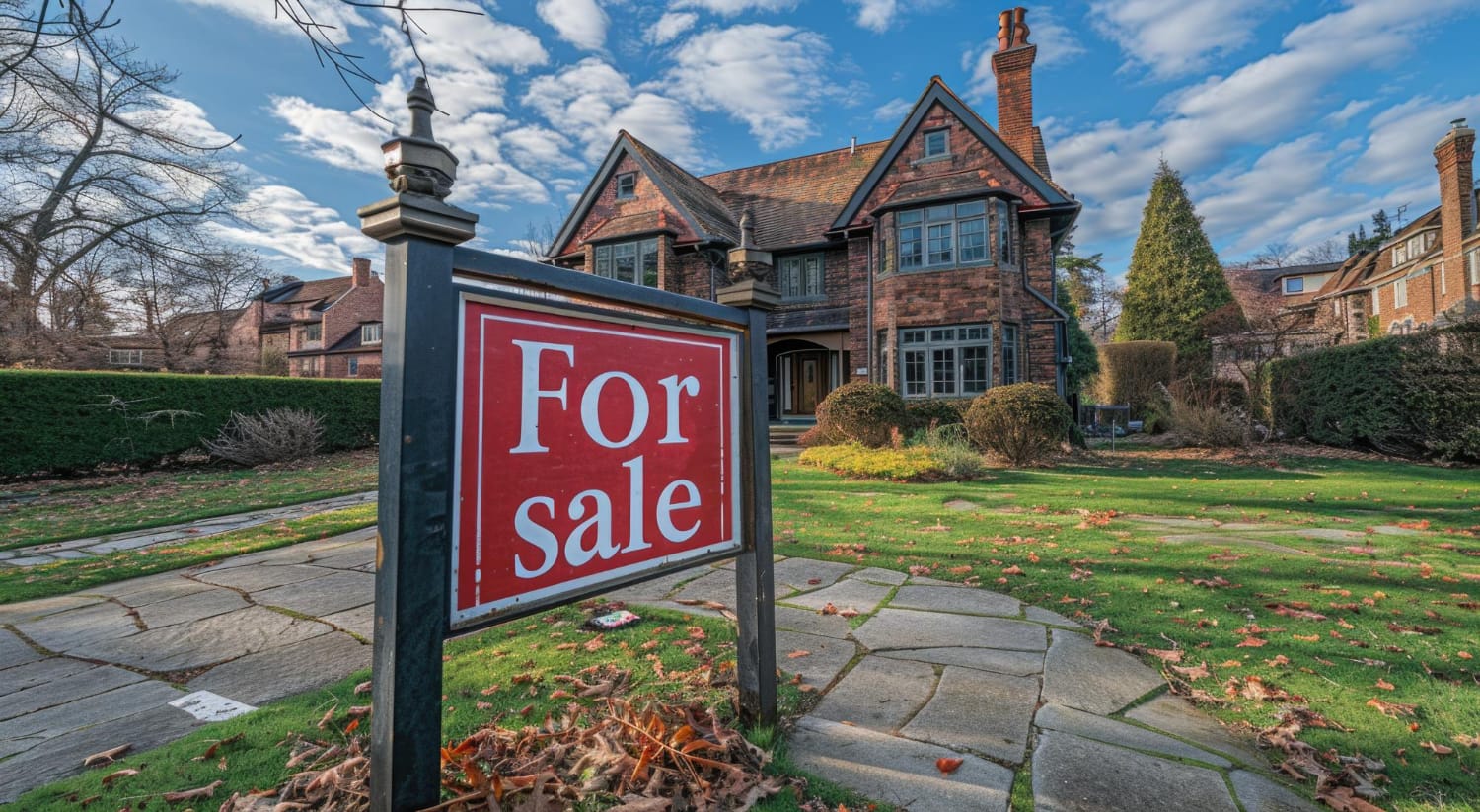FEATURED ARTICLE
Mortgage Terminology Explained

Rebekah May
December 3, 2020 •10 min read
Mortgage terminology can be pretty confusing. In this glossary, we explain all the words you’re like to come across when applying for a mortgage. Because understanding what each of these terms means can make the mortgage application process a helluva lot easier.
Fixed Rate Mortgages:
The first in our list of mortgage terminology is a fixed-rate mortgage. This is a type of mortgage where the interest rate is fixed for a set amount of time. This means you know exactly how much money you will be repaying each month.
Variable Rate Mortgages:
This type of mortgage has a variable interest rate. This means that the interest rate you’re paying could increase, or decrease, therefore resulting in your monthly payments also increasing/ decreasing. This type of mortgage is generally seen as a little riskier, which means you could be offered a lower interest rate, to begin with.
Tracker Mortgages:
This is a type of mortgage that tracks the Bank of England base interest rate at a margin either higher or lower than it. For example, if the Bank of England base rate increases by 1%, your tracker mortgage will also increase by 1%.
Discount Rate Mortgages:
A discount rate mortgage is an offer you receive on a mortgage where the interest rate is less than the set amount on a standard variable rate mortgage. For example, the interest rate could be 5% on an SVR - if you have a 1% discount then your interest rate would only be 4%. If your lender then raises their interest rate to 6%, you’d pay 5%. Discount rate mortgages can be a good thing because you’re paying less than the standard rate, however, it does mean that your lender can change the amount of the original SVR which will change the cost of your monthly repayments.
Offset Mortgages:
An offset mortgage is a type of mortgage that lets you link your mortgage to your savings. The amount you have in your savings account is then used to reduce the amount of interest charged on the mortgage. For example, you have a £100,000 mortgage and £10,000 in savings. You’ll only need to pay interest on £90,000 of your mortgage.

Interest Only Mortgages:
With an interest-only mortgage, you only pay the interest on your mortgage each month. This means you are not paying off any of the capital towards the house. Some people choose this type of mortgage because they are confident that they can use other methods (such as investing, selling another property) to fully pay off the mortgage at the end of the term.
Guarantor Mortgages:
A guarantor is someone who agrees to pay your monthly mortgage repayments if you can’t. If you can’t buy the home you want with a traditional mortgage, you can improve your chances of being accepted for a mortgage by getting a guarantor mortgage. A guarantor mortgage is therefore popular with first-time buyers, and people who have a bad credit history.
Repayment Mortgages:
A repayment mortgage is where you repay a bit of the capital each month, as well as the accrued interest. This means that the amount borrowed reduces throughout the term, and by the end of the term, you’ll have fully repaid the loan.
Repayment Vehicle:
If you take out an interest-only mortgage you will be required by lenders to have a repayment vehicle. This is an investment that you have alongside your mortgage that helps you repay the loan at the end of the term. It could be something like stocks and shares ISA, a pension, or property.
Standard Variable Rate:
The standard variable rate is the default interest rate that your lender charges you after you have finished your introductory fixed, tracker, or discounted mortgage deal. These interest rates tend to be higher than other offers, which is why many people will switch when they are put onto the SVR.
Capped Rate:
A capped rate on your mortgage means the interest rate charged will never exceed a predetermined limit. This is regardless of what happens to the Bank of England's base rate (something we know can influence mortgage interest rates). Capped rates are normally only for an introductory period - commonly between two and five years, and can be quite difficult to come across. But having one does add some financial security because you know your monthly repayments won’t go above a certain amount.
Collar Rate:
A collar rate is the opposite of a capped rate. Having this type of mortgage means your interest rate will not fall below a set amount. This means that if interest rates fall, you won’t necessarily see any benefit.
Mortgage Deed:
The mortgage deed is a document that provides confirmation that you’re happy to proceed with the mortgage offer. It includes details of the legal obligations of the borrower and the lenders rights if the borrower fails to make their repayments. Once this document has been signed, it is a legally binding document.
Mortgage Term:
The mortgage term is the amount of time you are taking the mortgage out. For example, 25 years. Deciding your mortgage term is extremely important. The longer the term, the cheaper the monthly repayments (although you will have to pay this monthly payment for longer). The shorter the term, the higher monthly repayments (but you will pay off your mortgage more quickly)
Remortgage:
This is when you change your mortgage without moving house. Remortgaging could help you reduce the size of your loan, and might mean you have cheaper rates/ cost you less money.
Tie-In Period:
This is the time period in which you are locked into your mortgage deal. If you leave your mortgage during this time period, you will have to pay an early repayment fee. Mortgages that lock you in after your introductory period should generally be avoided, as they can end up costing you more money in the long run.
Broker:
A broker is someone who can help arrange a mortgage between you and the mortgage lender. They’ll first work with you to help you understand what type of mortgage you want, and then they’ll search the market to find a mortgage that best suits your needs. A mortgage broker can be super helpful in finding you the best deal, just make sure they are 'whole-of-market', which means they have access to every deal out there to find the right one for you! Here's a great guide on mortgage brokers to learn more too.
Intermediary:
An intermediary is someone who can help you arrange a mortgage. See also a mortgage broker.
Deposit:
This is one phrase on our list of mortgage terminology that you might be well aware of. A deposit is a sum of money that you pay upfront towards the cost of the property. The minimum deposit you might need in the UK is 5% of the property’s value, but the best deals are usually reserved for people who have much larger deposits.
If you need a helping hand saving up for a deposit, see how Emma can help you save money.
Loan To Value:
Loan to value (LTV) is the ratio between the value of the loan you’re taking out and the value of the property. For example, you want to buy a house. You pay 10% of the property value as a deposit, so the LTV will be 90%.
Equity:
Equity is the word used to describe the amount of property you own outright. For example, it would be the amount of money you put down for a deposit, plus the amount of money you’ve paid off your mortgage.
Negative Equity:
Negative equity is when the value of your home is less than the amount you still have to pay on your mortgage.
Base Rate:
The base rate is a rate of interest that is set by the Bank of England. It is currently set at 0.1%. The base rate influences the interest that many lenders set for their tracker and standard variable rate mortgages.
APR:
APR stands for annual percentage rate. It is a broader way to measure the overall cost of a mortgage for a year. It includes the standard fees you’ll have to pay, as well as the interest.
Help To Buy:
Help to buy is just one of many schemes launched by the government to help people onto the housing market. You can read more about the help to buy scheme here.
Shared Ownership:
Shared ownership is a help to buy scheme targeted at people who can’t quite afford the mortgage on 100% of a home. The scheme lets you buy a share of a property, and pay rent on the remaining share. With shared ownership, you could own anywhere between 25% to 75% of the property. While this is a great way for people to get on the property ladder, there are some downsides to shared ownership. For example, you often have to pay maintenance charges, sub-letting is not allowed, you don’t have full control over alterations to your home, and selling the property is often more complicated than if you owned 100%.
Equity Release Scheme:
Popular amongst older homeowners, equity release schemes let you take the cash that is tied up in your property. There are two different types of equity release schemes; lifetime mortgages and home reversion. Lifetime mortgages are most common - they let you take out a loan on your property in return for a lump-sum payment. You own the property, and the debt isn’t paid until you die. With a home reversion scheme, you actually sell a percentage of your home to a company in return for a lump-sum payment. You can still live in the property, but when it is eventually sold, you only get to keep the percentage of the property’s value that you own.
Buy To Let:
A buy-to-let mortgage is a mortgage for people who buy a property with the main intention of renting it out to tenants. This type of mortgage usually requires a much larger deposit than normal residential mortgages. In most cases, the interest rates and fees are also higher.

Freehold:
If you’re searching for houses, you might have come across the terms freehold or leasehold. Freehold is when you own the property, and the land it sits on. This means maintaining the building and land is entirely your responsibility. It also means no ground rent or service charges. And means you’ll have lower conveyancing costs because the contract is generally much simpler.
Leasehold:
Above we mentioned what a freehold was, and now we’re going to discuss what a leasehold is. With a leasehold, you own the property, but you do not own the land it stands on. It is almost like you are renting the property from the freeholder for a number of years (it could be anything up to 999 years!). A property with less than 70 years on the leasehold can be difficult to get a mortgage for. With a leasehold, you might also have to pay high ground rent and expensive service charges.
Agreement in principle:
An agreement in principle is a document from a mortgage lender that confirms you are able to borrow a certain amount of money. You can then use this document to prove to the seller that you have enough money to buy their property.
Arrangement Fee:
When you take out a mortgage, you might also have to pay a set-up/ arrangement fee. The arrangement fee amount varies, but in the UK you could be charged up to £2,000. In most instances, you can add the arrangement fee to your loan, but remember that this means you will pay interest on it.
Conveyancing:
Conveyancing is a legal process that you have to follow when you buy or sell a property. It confirms the legal transfer of a property from one owner to another, i.e. when you “exchange contracts”. This transfer can be carried out by a solicitor or a licensed conveyancer.
Valuation Survey:
Before you buy a property, the lender will want to check that the amount you’re paying is roughly the same as what the property is worth. This is called a valuation survey. This type of survey is different from a structural survey, so you should plan to complete both of these.
Stamp Duty:
Stamp duty land tax (SDLT) is a fee you have to pay when you buy a property. The amount you pay depends on the price of the property you’re buying and if it’s your first home. There is currently a reduced rate for stamp duty until March 2021 which means you will pay no stamp duty if your main home is under £500,000. If your home is more expensive than this, you will have to pay stamp duty on the remaining amount (5% of anything over £500,000 to £925,000).

Early Repayment Charges:
An early repayment charge is a penalty fee that your provider might charge if you overpay your mortgage by more than they allow. Paying off more of your mortgage than you are allowed means you will pay less money in interest in the long run. To recoup some of the lost money, lenders, therefore, put these early repayment charges in place.
CCJ:
CCJ stands for County Court Judgement. A creditor might apply for a CCJ against you if they think you won’t repay the money. You could therefore receive a CCJ if you haven’t paid your credit cards, loans, overdrafts, rent, etc. If your CCJ gets recorded, it will be added to your credit profile. This can negatively impact your ability to get credit for six years and will make getting a mortgage quite difficult.
Arrears:
Arrears simply means “money that is owed and should have been paid earlier”. If you have missed any of your mortgage repayments, you will therefore go into arrears. To avoid going into arrears you could agree to a different repayment plan with your lender, find ways to reduce your outgoings, or increase your income.
Repossession:
Our last phrase in this list of mortgage terminology is repossession. If you have mortgage arrears there's a chance that your home will be up for repossession. The home repossession process is normally as follows... Your lender will contact you about your mortgage arrears. If you cannot agree on a more suitable repayment plan the lender will start court action. A judge will review whether your case needs a full hearing. You might then be given an "outright order" which sets a specific date you need to leave your home. Or you might receive a "suspended order" which allows you to keep your home, as long as you keep up with a new monthly mortgage payment.
Summary
We hope that this glossary will come in handy when you’re applying for a mortgage. We know there is a lot of mortgage terminology, so keep the article open on your saved tabs, and refer back to it whenever you’re unsure about something.
Going through the house buying process at the moment? Let us know how you’re getting on by starting a new topic on the Emma Community. You might find that others are going through the same thing and can help with any questions, queries, or frustrations you’re having!
You may also like
Check out these related blog posts for more tips
© 2025 Emma Technologies Ltd. All Rights Reserved.
Emma is registered and incorporated in England and Wales.
Emma Technologies Ltd is an appointed representative of RiskSave Technologies Ltd, which is authorised and regulated by the Financial Conduct Authority (FRN 775330).
Payment services (Non MIFID or Deposit related products) for Emma Technologies Ltd are provided by The Currency Cloud Limited. Registered in England No. 06323311. Registered Office: Stewardship Building 1st Floor, 12 Steward Street London E1 6FQ. The Currency Cloud Limited is authorised by the Financial Conduct Authority under the Electronic Money Regulations 2011 for the issuing of electronic money (FRN: 900199). For more detail on how your money is protected please see here. You can also find Currency Cloud's Terms of Use here.
Emma Technologies is an Introducer Appointed Representative of Quint Group Limited and not a lender. Quint Group Limited is authorised and regulated by the Financial Conduct Authority (Firm Reference Number 669450). Monevo Limited is an Appointed Representative of TransUnion International UK Limited. TransUnion is authorised and regulated by the Financial Conduct Authority (Firm Reference Number 737740). Emma Technologies introduces customers first to Quint Group Limited, as a licensed credit broker, who then refers on to Monevo Limited.
Emma is registered with the Financial Conduct Authority under the Payment Services Regulations 2017 for the provision of payment services.
Financial Conduct Authority Reg Nr: 794952.
Company Registration Number: 10578464.
Data Protection Registration Number: ZA241546.
All testimonials, reviews, opinions or case studies presented on our website may not be indicative of all customers. Results may vary and customers agree to proceed at their own risk.
Resources: Cancel subscriptions, Cashback offers, Who charged me, Rent Reporting, Budgeting, Investment universe, Emma vs Moneyhub.
Featured cashback offers: Samsung, SimplyCook, NordVPN, Audible, M&S Homeware.









